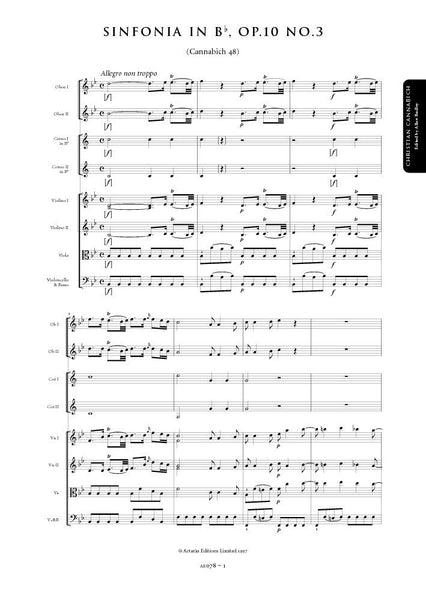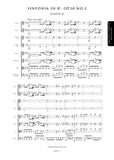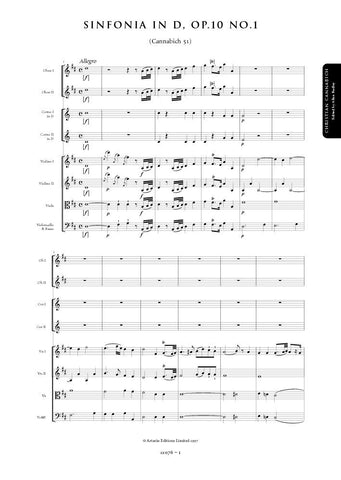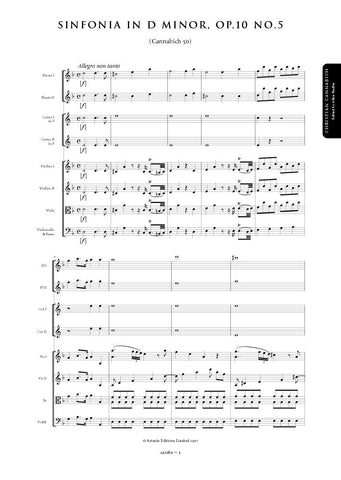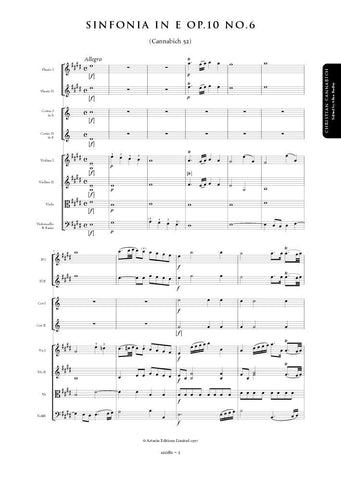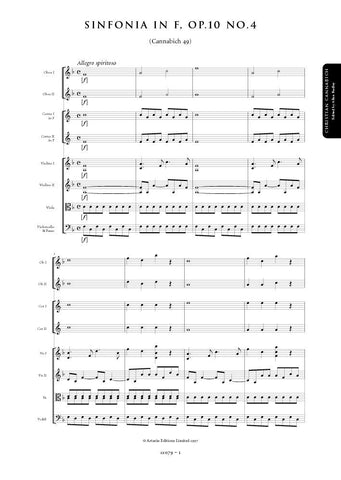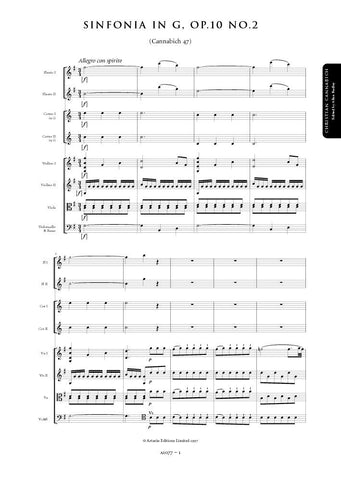Cannabich, Christian: Symphony in B flat major, Op. 10, No. 3 (Cannabich 48) (AE078) – sheet music
Next Product
Description |
Cannabich, Christian (1731-1798)
|
||||||||||||||||||
Audio sample |
|||||||||||||||||||
Details |
The six symphonies published in Mannheim by Götz in 1772 as Opus 10 were written mid-career. In his own catalogue of the 76 symphonies Cannabich allocated the numbers 47-52 for these works. Although partial autographs survive for all six works, the Götz publication date is the earliest verifiable date for the works and we can assume that they were published relatively close to the date of composition and were probably conceived as a set. The order in which the works appear in the published set does not correspond with Cannabich's own numbering system: Op.10 No.1 = No.51; Op.10 No.2 = No. 47; Op.10 No.3 = No. 48; Op.10 No.4 = No. 49; Op.10 No.5 = No. 50; Op.10 No.6 = No.52.While the title page of the Götz print specifies oboes and horns "SIX SIMPHONIES / A deux Violons, Alto et Basse, / Hautbois & Cors / DEDIS / A SON EXCELLENCE / MONSIEUR LE COMTE DE SICKINGEN .../ Composes Par / MR CANNABICH / Directeur de la Musique Instrumentale / OEUVRE X..." - three of the symphonies (Op.10 Nos. 2, 5 & 6) call for pairs of flutes and horns. Although the parts are clearly intended to be interchangeable, the substitution of flutes for oboes in the G major, D minor and E major symphonies contributes significantly to the subtlety of the orchestral palette; the wind instruments are omitted from all six slow movements. Several cues for bassoon (i.e. Vc & Fag) occur in Op.10 No.6 which probably imply the addition of a bassoon to the bass-line in all the symphonies in the set. All six works are cast in three movements a departure from the prevailing four movement cycle of the later Johann Stamitz symphonies and share similar structural principles. If Mozart acquired his great technical virtuosity through his careful study and profound appreciation of Haydn's works, his orchestral sound and the sensuousness of much of his writing owe much to the works of his friend Christian Cannabich. The present edition is based on a copy of Götz's print now preserved in the music library of the Civico Museo in Bologna. The notation of articulation and dynamic markings has been standardised throughout, and, when missing from the source, markings reconstructed from parallel passages. These are indicated by the use of dotted slurs or brackets where appropriate. Like most eighteenth-century sources, the Götz print is somewhat inconsistent in its notation of appoggiature; these have also been standardised to minimise confusion. Obvious wrong notes have been silently corrected; otherwise, any editorial emendation with no authority from the source is placed within brackets. Allan Badley |
||||||||||||||||||
Score Preview (best viewed in full screen mode) |
|||||||||||||||||||




